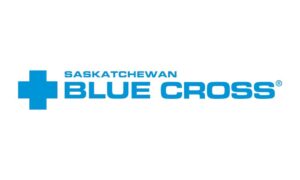What is IDV?
What is IDV?
What is Insured Declared Value (IDV)? The term ‘IDV’ refers to the maximum claim your insurer will pay if your vehicle is damaged beyond repair or is stolen. Suppose the market value of your car is Rs. 8 lakh when you buy the policy. That means the insurer will disburse a maximum amount of Rs. Jun 23, 2020
What are the 3 types of car insurance?
The three types of car insurance that are universally offered are liability, comprehensive, and collision insurance. Drivers can still purchase other types of auto insurance coverage, like personal injury protection and uninsured/underinsured motorist, but they are not available in every state.
Why is comprehensive cheaper?
How come comprehensive cover is sometimes cheaper? It’s because a lot of high-risk drivers tend to go for third-party cover as a way of lowering their insurance costs. As a result, the statistics begin to skew towards a higher number of claims on third-party policies. Feb 16, 2022
How does a copay work?
A copay (or copayment) is a flat fee that you pay on the spot each time you go to your doctor or fill a prescription. For example, if you hurt your back and go see your doctor, or you need a refill of your child’s asthma medicine, the amount you pay for that visit or medicine is your copay.
Is it better to have a copay or deductible?
Copays are a fixed fee you pay when you receive covered care like an office visit or pick up prescription drugs. A deductible is the amount of money you must pay out-of-pocket toward covered benefits before your health insurance company starts paying. In most cases your copay will not go toward your deductible. Jan 21, 2022
What is difference between copay and insurance?
A copay is a set rate you pay for prescriptions, doctor visits, and other types of care. Coinsurance is the percentage of costs you pay after you’ve met your deductible.
Who receives the copay?
A copayment is a defined dollar amount a patient pays for medical expenses. With many health insurance plans, a patient pays 100 percent of costs out-of-pocket until they have met their deductible. After meeting the deductible, a patient pays a copayment (often shortened to “copay”).
What does no copay mean?
The EOB will indicate the amount that was covered by the insurance provider, and what remaining amount the client owes. If they owe nothing, as the service was paid at 100% — then your client does not owe a copay.
What does it mean when you have a $1000 deductible?
A deductible is the amount you pay out of pocket when you make a claim. Deductibles are usually a specific dollar amount, but they can also be a percentage of the total amount of insurance on the policy. For example, if you have a deductible of $1,000 and you have an auto accident that costs $4,000 to repair your car. Nov 15, 2017
Does copay go towards out-of-pocket?
Copays typically apply to some services while the deductible applies to others. But both are counted towards the plan’s maximum out-of-pocket limit, which is the maximum that the person will have to pay for their covered, in-network care during the plan year. Feb 5, 2022
Does copay go towards out-of-pocket maximum?
Copays count toward the out-of-pocket maximum for all new health plans. If you have really high healthcare expenses, this is a huge positive for you with regards to your overall healthcare expenses for the year. In most cases, copays do not count toward the deductible. Jun 29, 2021
What is a good deductible for health insurance?
The IRS has guidelines about high deductibles and out-of-pocket maximums. An HDHP should have a deductible of at least $1,400 for an individual and $2,800 for a family plan. Mar 10, 2022
What does 30% coinsurance mean?
When you go to the doctor, instead of paying all costs, you and your plan share the cost. For example, your plan pays 70 percent. The 30 percent you pay is your coinsurance.
What does 80% coinsurance mean?
An eighty- percent co-pay (or coinsurance) clause in health insurance means the insurance company pays 80% of the bill. A $1,000 doctor’s bill would be paid at 80%, or $800. The above definition also applies to coinsurance in liability insurance. Apr 8, 2013
What is co insurance health insurance?
The percentage of costs of a covered health care service you pay (20%, for example) after you’ve paid your deductible. Let’s say your health insurance plan’s allowed amount for an office visit is $100 and your coinsurance is 20%. If you’ve paid your deductible: You pay 20% of $100, or $20.




